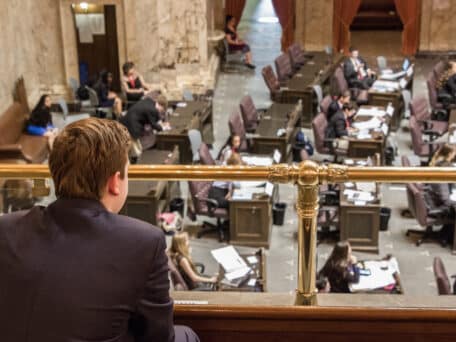Earlier this month, in the middle of the summer vacation travel season, the Washington State Department of Transportation (WSDOT) shut down the Hood Canal Bridge for seven hours after a span was stuck at an uneven angle. WSDOT initially claimed the problem was due to a “technical malfunction.”
However, as it turned out, the mistake was due to “human error.”
The problem of “human error” is common for our state’s incompetent transportation agency. Given that reality, we decided to document the top three “human errors” caused by WSDOT that have wreaked havoc on commuters (and their pocketbooks) – leaving off the list, of course, the walking “human error” that is ultimately in charge of WSDOT, Governor Jay Inslee.
Without further ado:
1. WSDOT’s long list of botches includes its failure to bill thousands of toll customers (a whopping 126,000 trips to be exact) over the course of 2015 – and making up for that error by sending out huge bills without warning to catch up all at once.
Many commuters were shocked to open their mail and receive a WSDOT bill for trips made over the course of one year. Making matters worse, the bills listed a due date of two weeks.
WSDOT attempted to do damage control by calling that incident a “computer error” on the part of contractor Electronic Transaction Consultants. Interestingly enough, the agency only issued its response blaming the contractor after the incident became public.
Prior to the news media picking up the story, WSDOT attempted to downplay the “glitch” by simply mailing out bills to impacted customers without any explanation or apology.
The out-of-touch response is typical. After all, WSDOT isn’t known for taking responsibility for its too-numerous-to-count mistakes. And, one can always expect agency officials to try and sweep their many gaffes under the rug.
While this billing incident may have been indeed been caused by a “computer error” (though one must ask if the computer’s programmed themselves to make mistakes), WSDOT’s out-of-touch response is an example of one of its many “human errors.” This time around they didn’t get away with hiding their mistake — WSDOT was forced to offer impacted customers more than the mere two weeks to pay their surprise bills.
2. When the Washington Department of Transportation (WSDOT) was in its initial planning stages for the Highway 99 project, the agency failed to inform Seattle Tunnel Partners — the project’s contractor — about the location of a steel pipe (which was put in place by the state). In December 2013, the tunnel-boring machine named Bertha struck the pipe.
The “human error” delayed the project for more than two years.
Though, in its usual behavior, WSDOT attempted to blame the incident on the Seattle Tunnel Partners. However, a dispute review board later ruled that the responsibility was with the state.
As Shift recently reported, Hitachi Zosen (the company which built Bertha) deemed WSDOT’s “pipe” incompetence as the cause of many subsequent problems experienced by the giant boring machine. In other words, this particular “human error” caused a lot of headaches and will ultimately cost taxpayers billions of dollars.
3. In 2014, an audit of the misguided Columbia River Crossing project revealed that WSDOT mishandled taxpayer dollars and paid “excessive profits” to project consultants. The Legislature originally called for the audit after finding that “$137 million of the project’s $182 million in expenditures consisted of payments to consultants.”
The audit suggested ways that WSDOT could avoid similar “human errors” in the future. Suggestions included that the agency “pay consultants only once for administrative costs – and only for costs that are fully documented and consistent with FHWA and contract requirements.”
So, just to be clear, the agency that runs transportation in our state — and taxpayers’ hard earned dollars — had to be told to “pay consultants only once for administrative costs.”
And, don’t even get us started on the I-405 tolling debacle that has plagued the region for over a year.
Ladies and gentlemen, Jay Inslee’s WSDOT at work.




